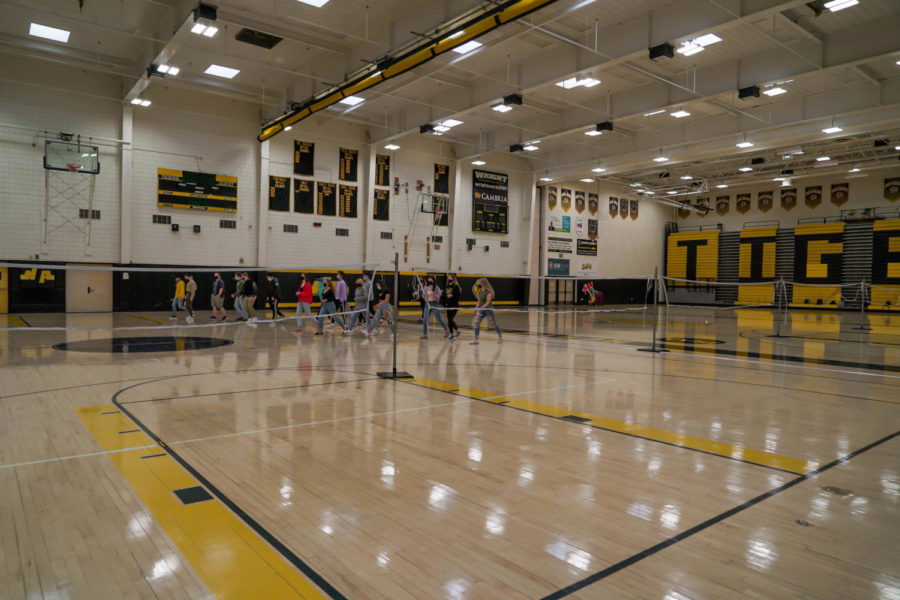Phys Ed classes have had to adapt to challenging circumstances
A look at how the NASH gym classes have adjusted amid the current pandemic
As the fourth quarter is well underway, students are used to the new gym class orientation.
April 20, 2021
Although gym class has long been a dreaded period for some NASH students, the introduction of masks has made it even more difficult. Many activities that have been included in prior year’s curriculums have been adjusted.
For instance, the Boating and Safety unit, which used to take place in the pool, has become completely virtual, focusing on videos and reading about boating safety itself. While the pre-pandemic scheduled activities are the preferred option for many, they have been forced to adapt.
NASH physical education teachers have used creative measures to ensure students stay active while working to decrease high-impact exercise.
“Because of the mask-wearing, we haven’t been doing as much intense aerobic activity this year,” PE teacher Mr. Kyriazis said.
Many students have acknowledged that wearing a mask while exercising may cause difficulty breathing. However, research has found that heart rate, respiratory rate, blood pressure, and oxygen levels aren’t negatively affected to any significant degree by cloth or polyester masks. Nevertheless, many continue to find them incredibly frustrating while exercising, as sweat tends to collect under the mask rather than evaporating.
“In healthy subjects, aerobic exercise with either a surgical mask or N95 respirator is safe and feasible,” the CDC explained in the research. “Although it may be associated with some discomfort, masking has only minor effects on physiological parameters during exercise.”
Those with breathing problems, such as asthma and related medical issues, may struggle greatly with masks while exercising. Due to these concerns, the amount of aerobic activities in our gym classes has been cut back.
Although the virus is often rendered inactive at the levels of chlorine in pools and doesn’t travel well in water, swimming-related activities have been removed from the physical education curriculum. This is mainly due to the fact that precautions, such as mask-wearing, aren’t able to be followed in the water. Another concern is the high concentration of students in a single pool, which increases the chance of contact.
Due to NASH’s current hybrid model, the number of in-person students during each physical education class is lower than in prior years. Although a minor issue comparatively, it nonetheless has forced a cutback on activities that require a larger amount of students.
Despite the fact that it is less of a change to the physical curriculum itself, the closing of the locker rooms has affected students. This rule is due to the high concentration of students while wearing less protection in a locker room. Because of this, many students elect to wear physical education-appropriate clothing on days when they have the class.
Unfortunately, however, many students forget to wear such clothing on their particular gym class days, which has forced teachers to adapt to this inevitability by changing certain activities. Luckily, as the year will soon come to a close, more and more students are coming prepared to class, as they are used to this year’s guidelines.












